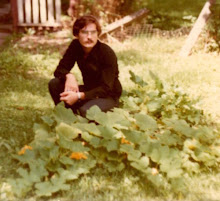Material for Dreams and Forms of Transformation
Karla Jay in her study of the works of Natalie Clifford Barney and Renée Vivien (The Amazon and the Page) reflects upon the imaginative space opened up by hybrid forms.
By locating her lovers in the magic world of the fairy tale, Vivien can avoid the conventional sacrifices found at the end of Lesbian fiction in the early decades of this [20th] century [...] Nevertheless, "Prince Charming" takes place in a real country (Hungary) and is told as a first-person narrative by a mother to her daughter. Although Hungary is exotically remote, it is not the Forest of Arden, and thus the reader is invited to imagine that Terka and Sarolta were real and, by implication, that their success could, with luck, be duplicated anywhere in Europe. Thus, the heterosexual reader may, if she chooses, view the tale as a slightly outré divertissement, but for the Lesbian, it could become material for dreams.
I like how the take on the function hybridity of the form is coupled with a splitting of the potential audience. What is hinted at is a further transformation: if a different view is adopted (beyond outré divertissement), the heterosexual reader is presto turned into a Lesbian. Or at the very least dreams of becoming one.
And so for day 639
12.09.2008
